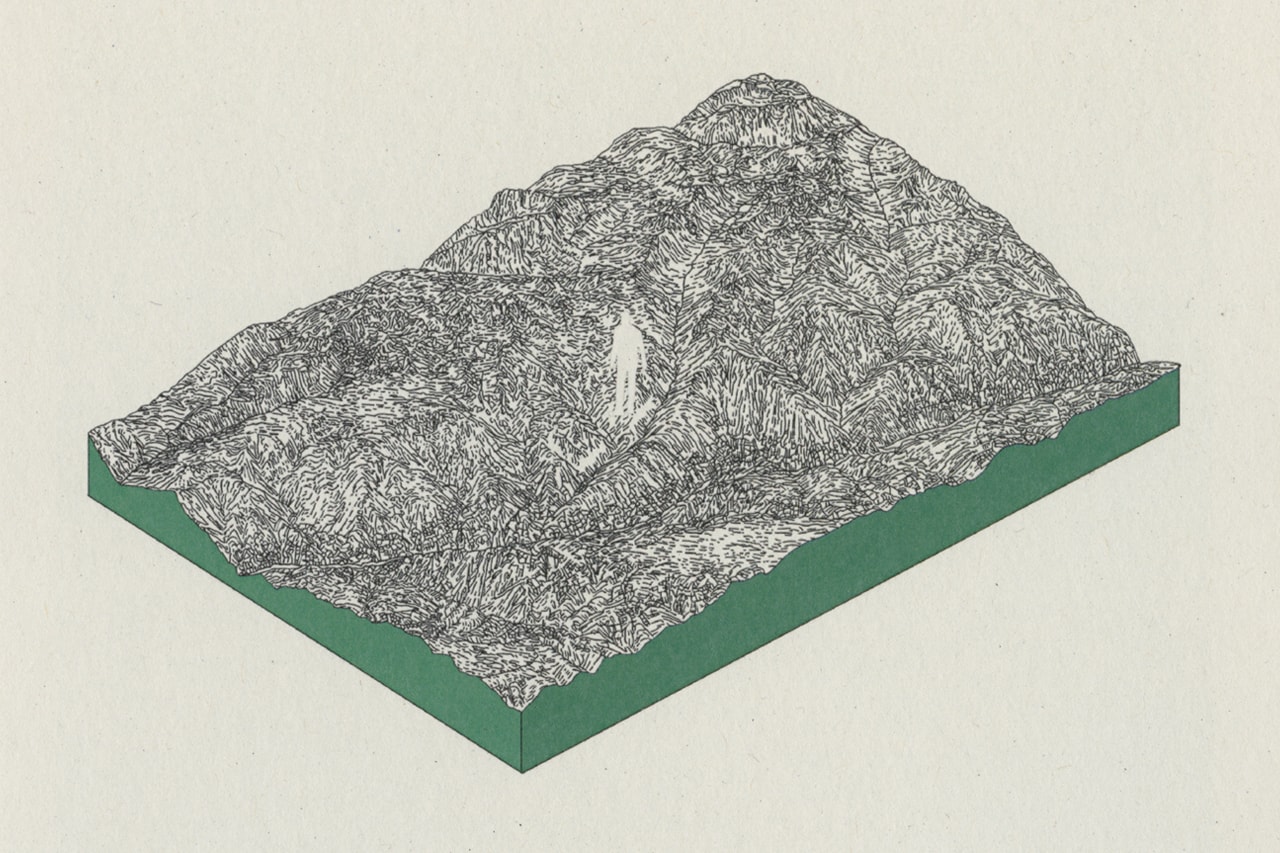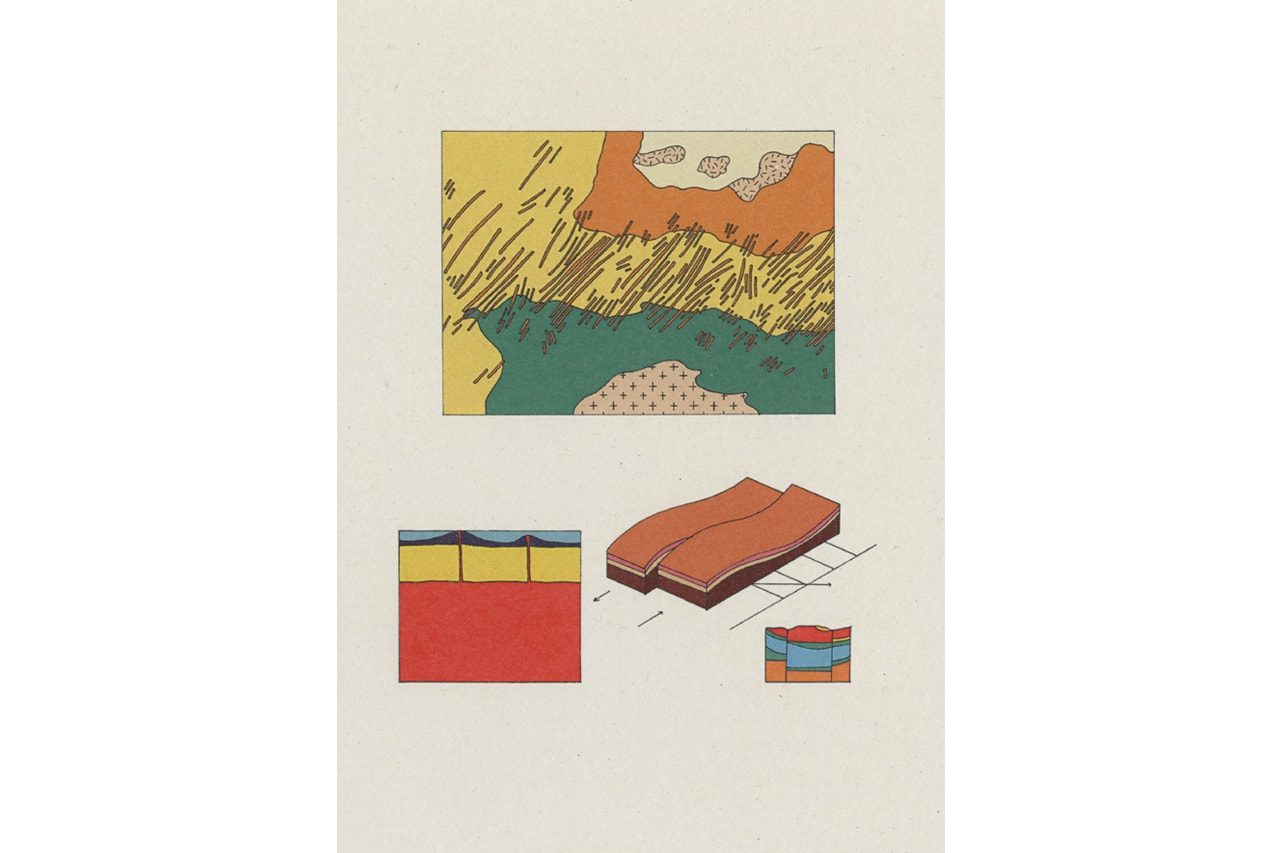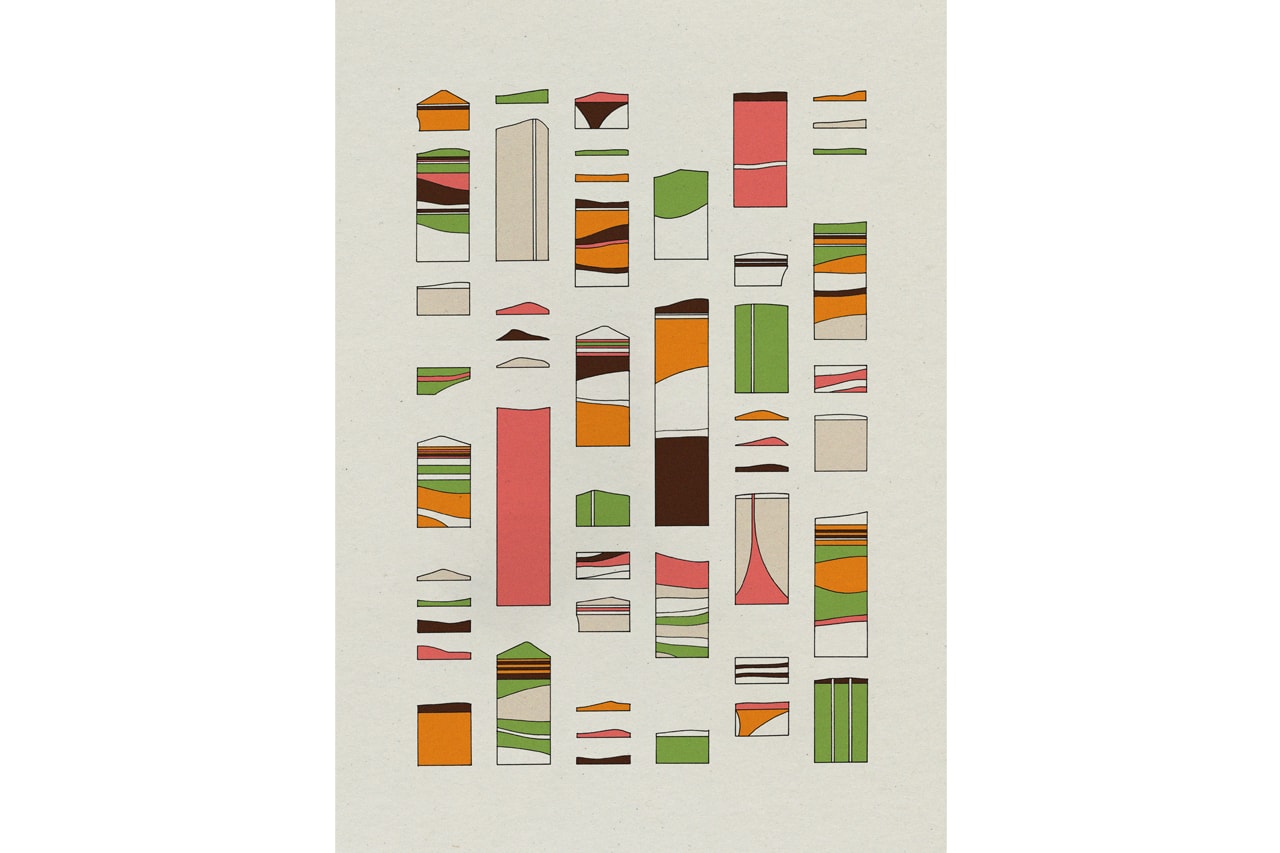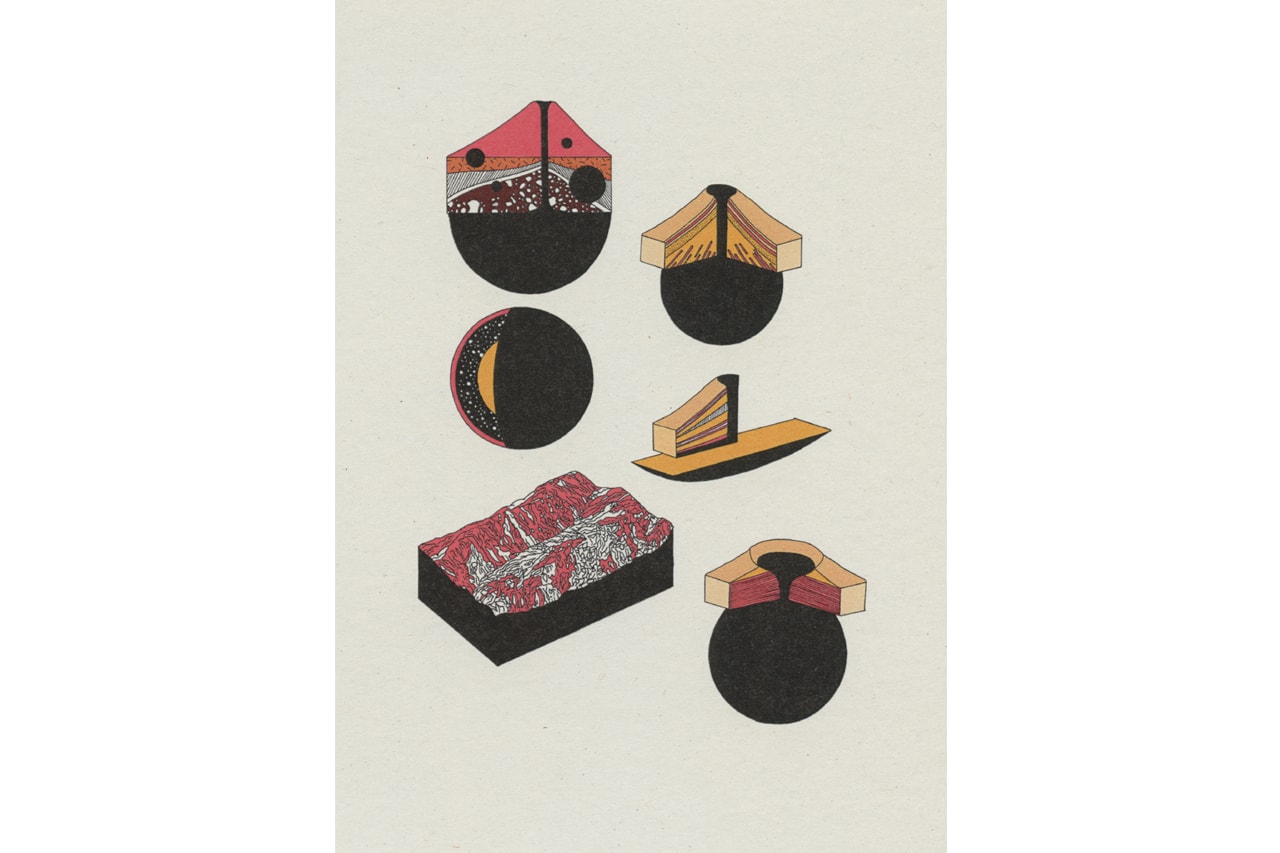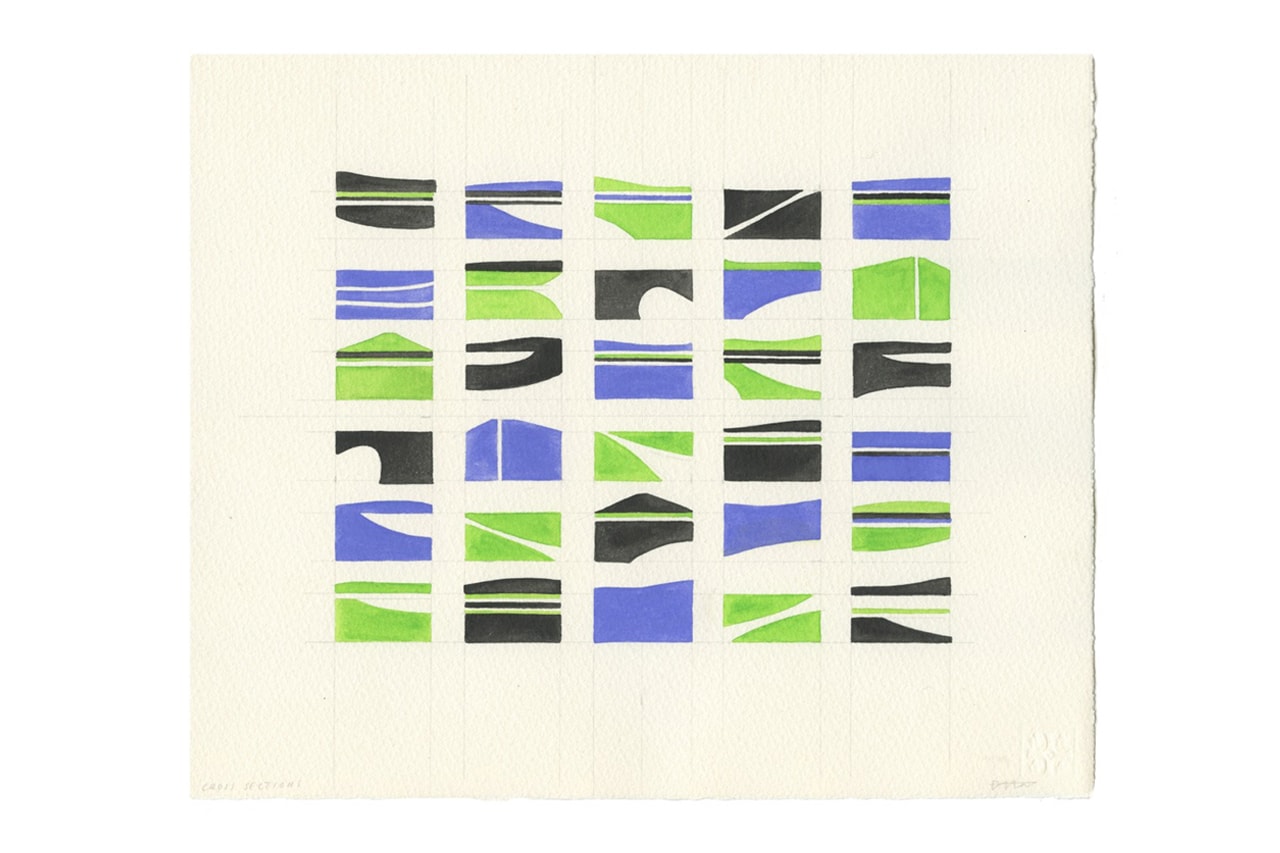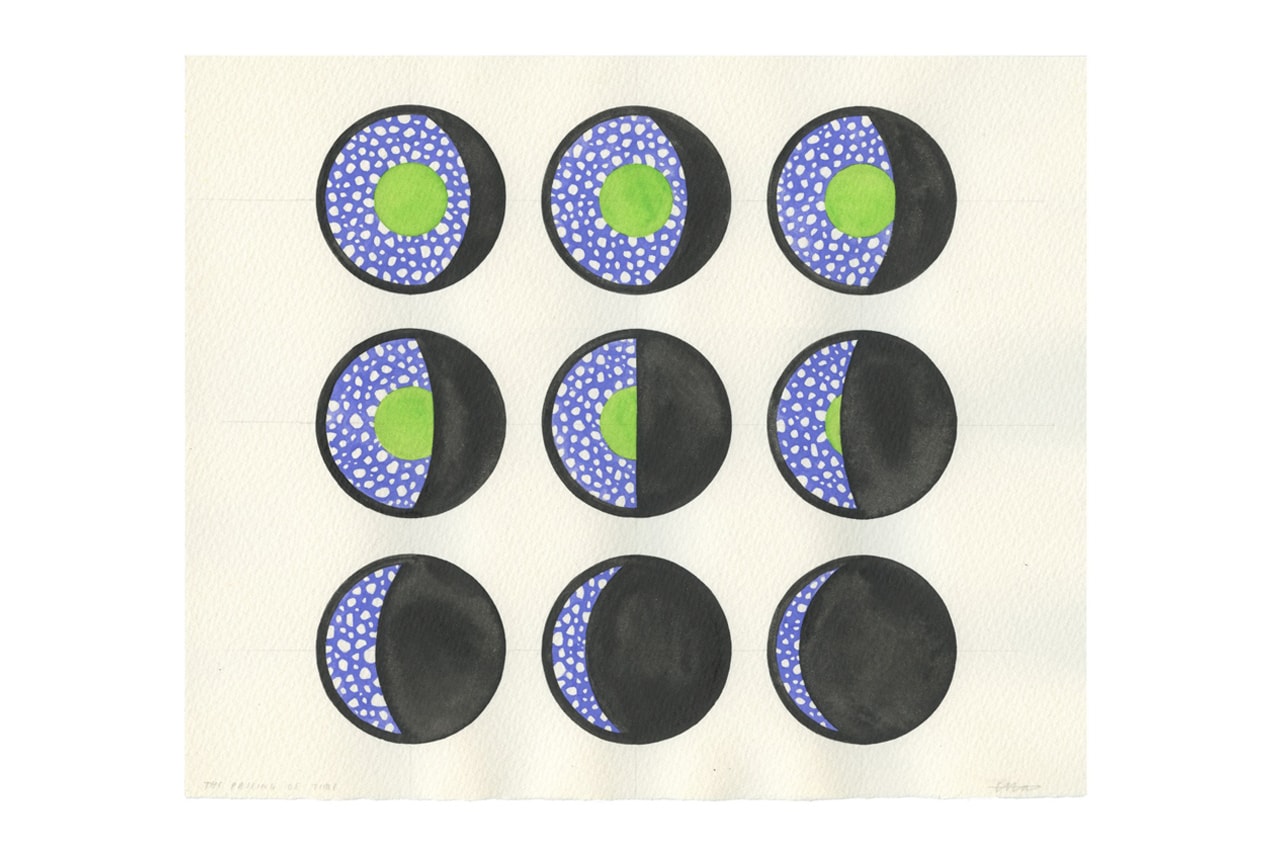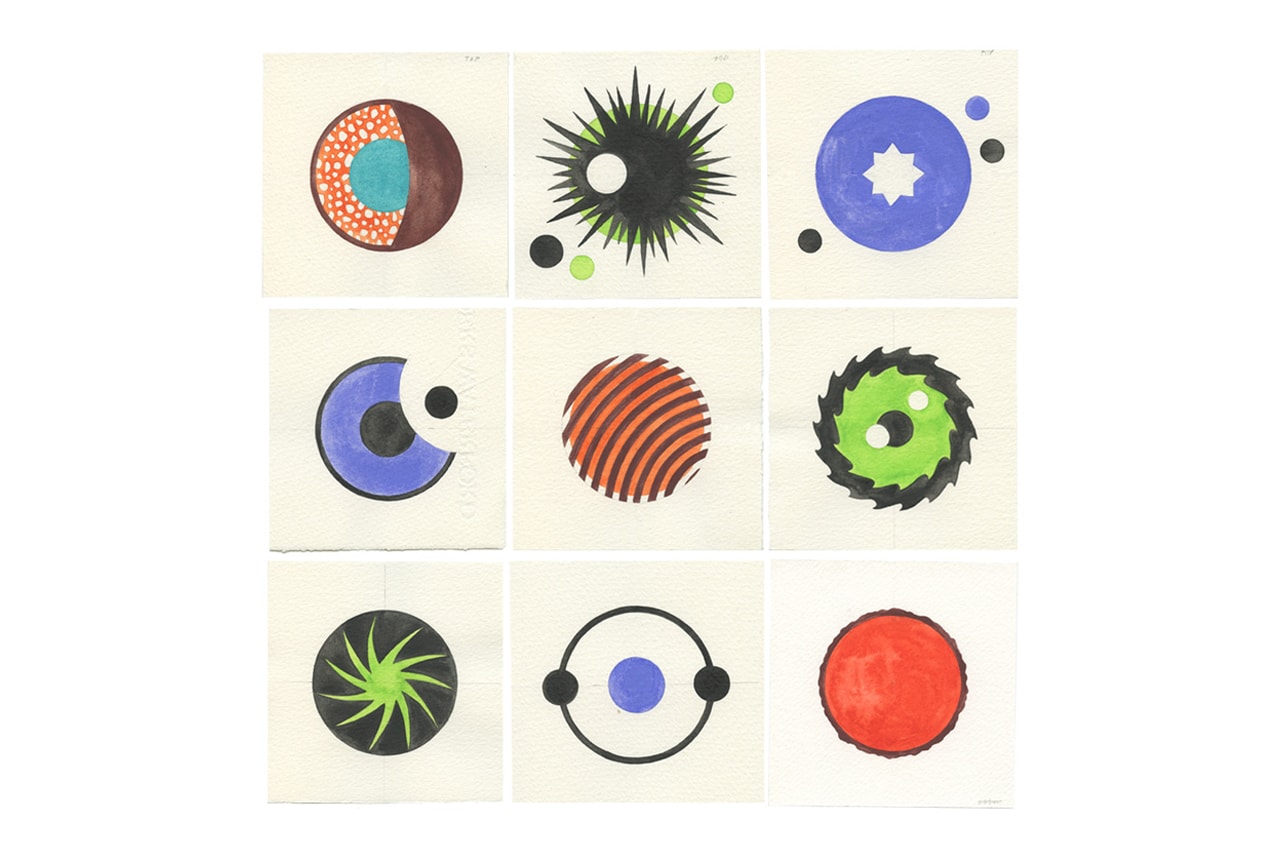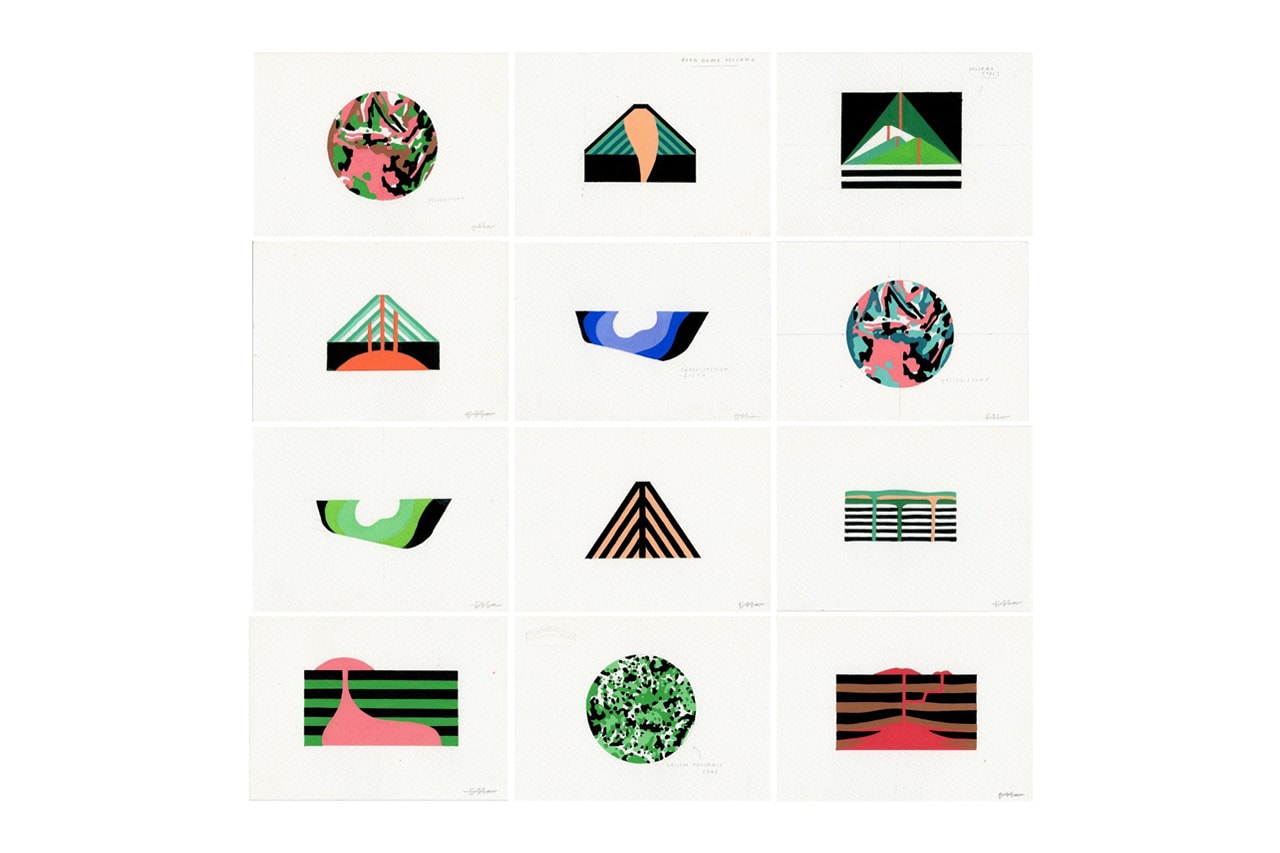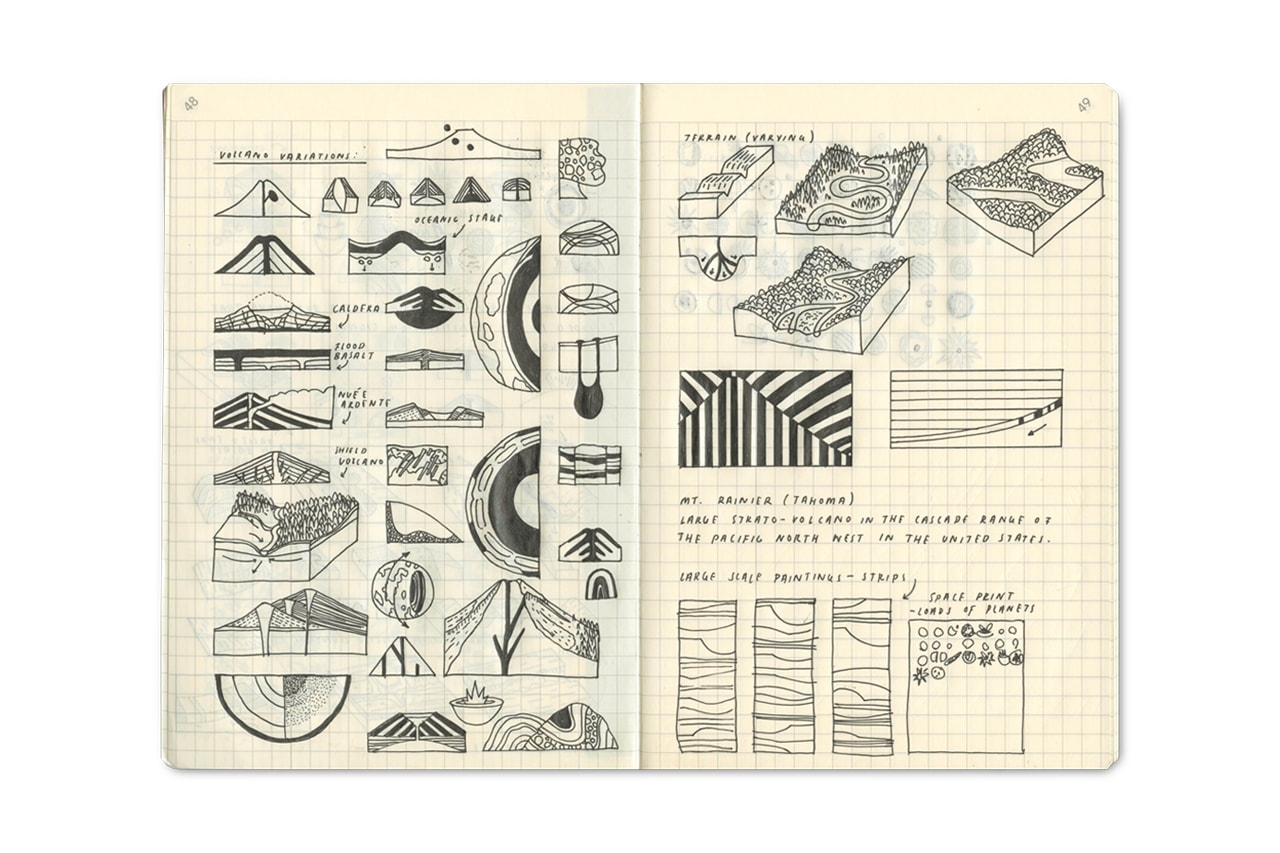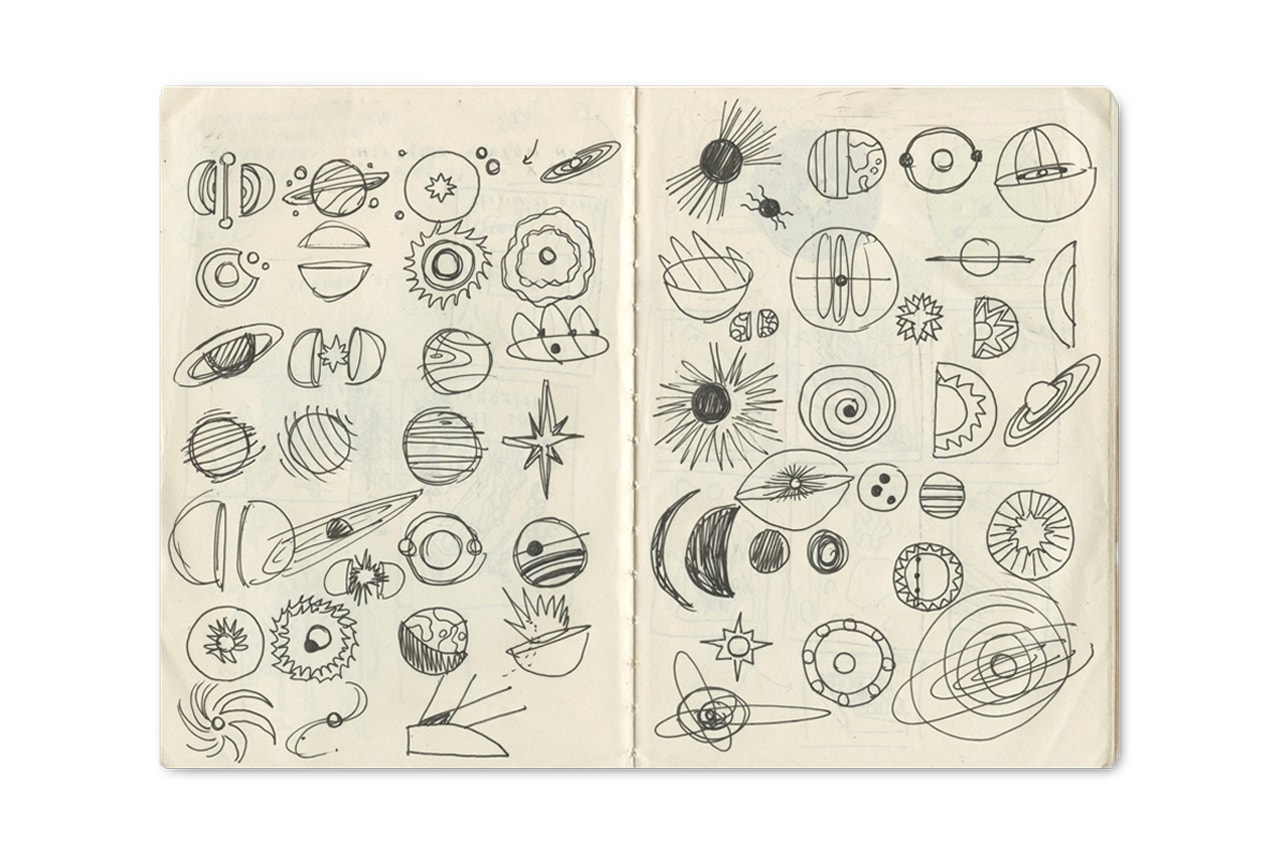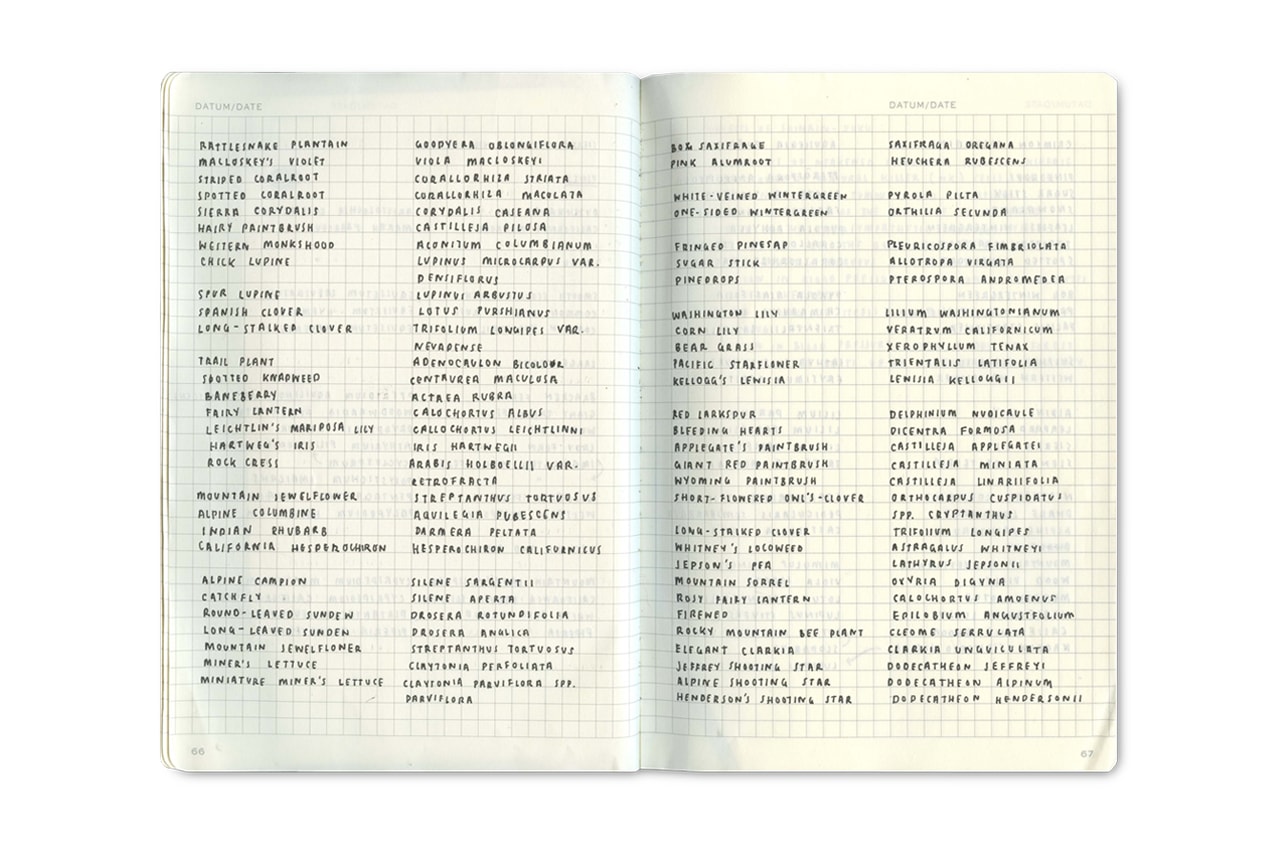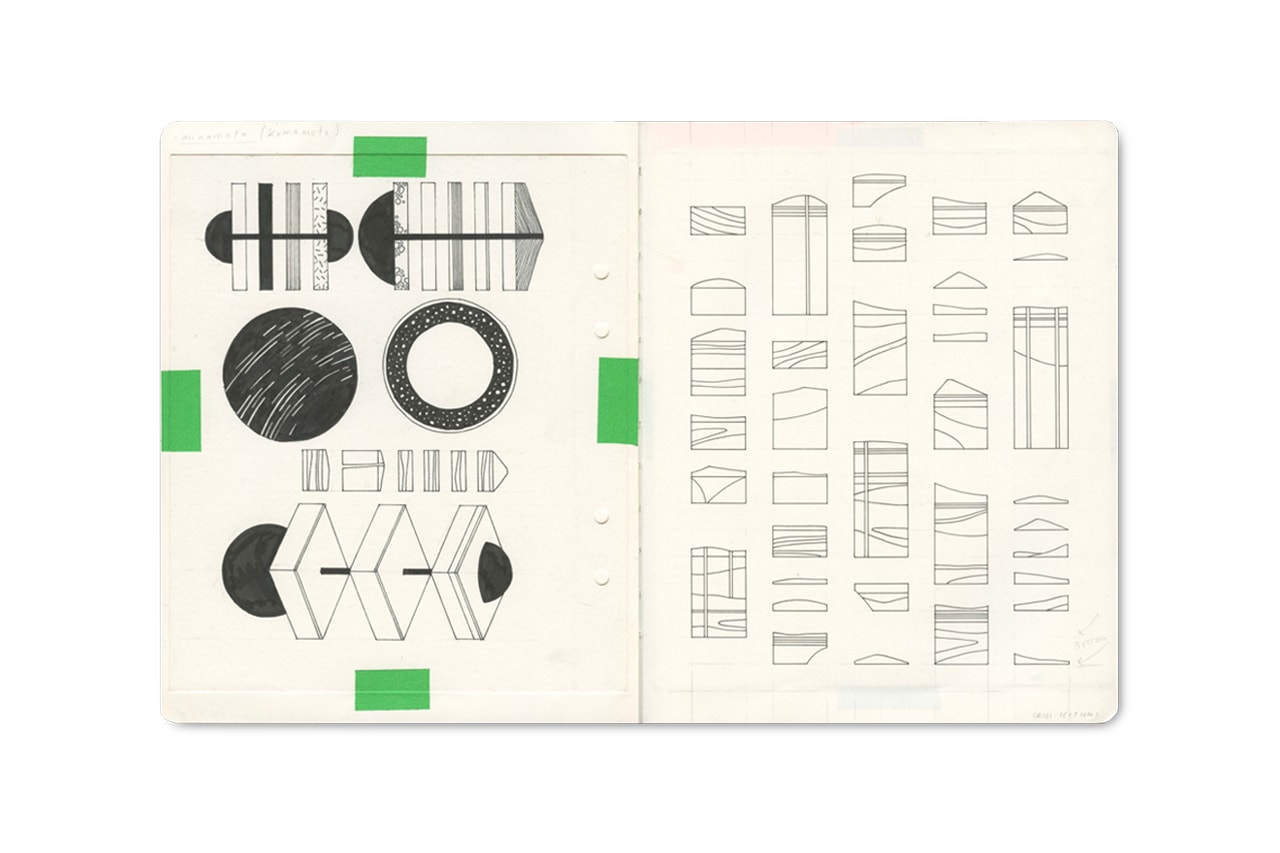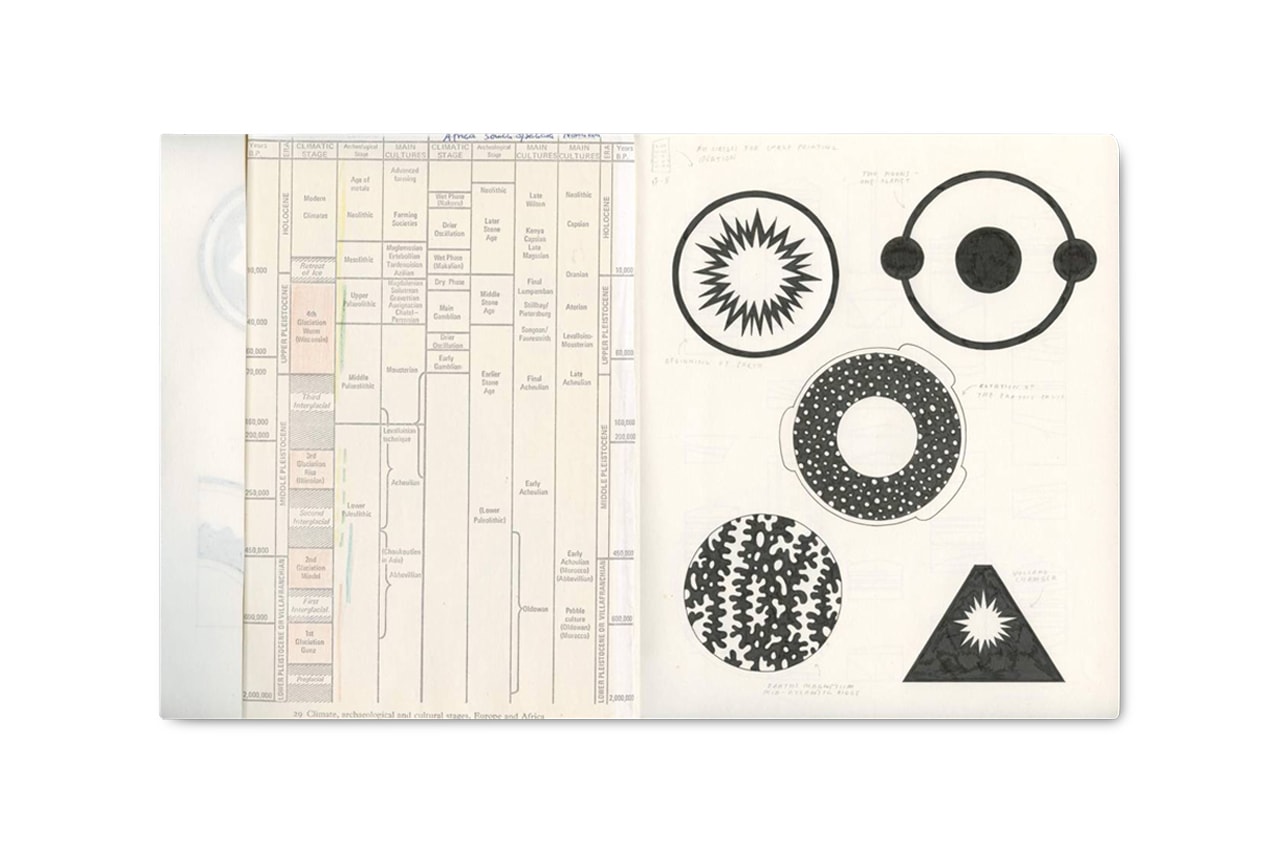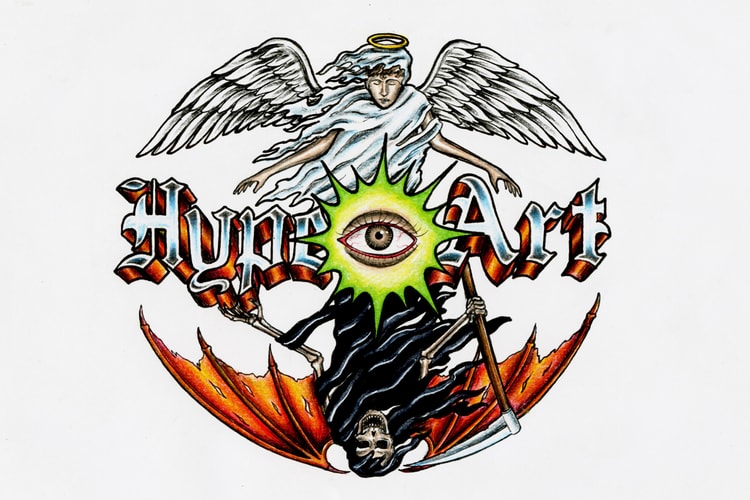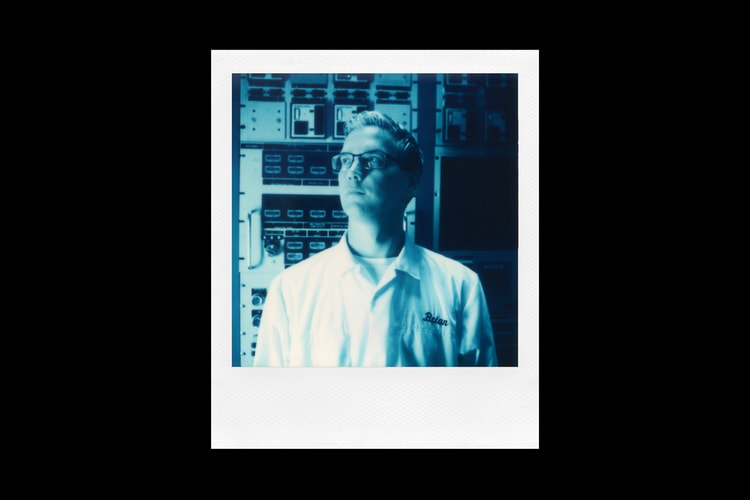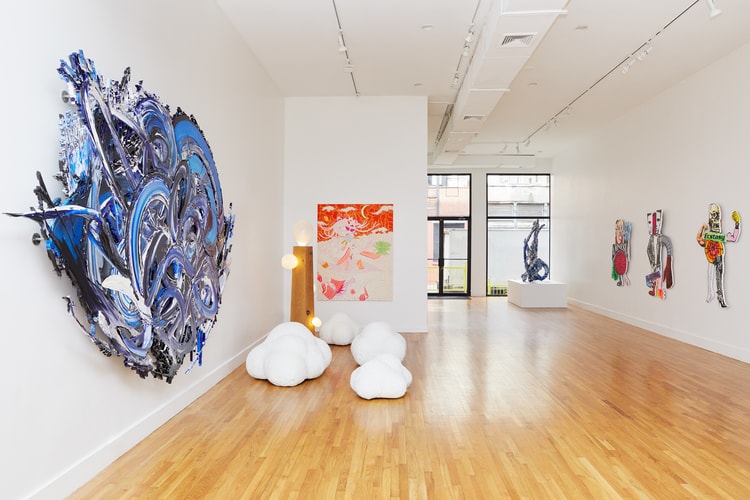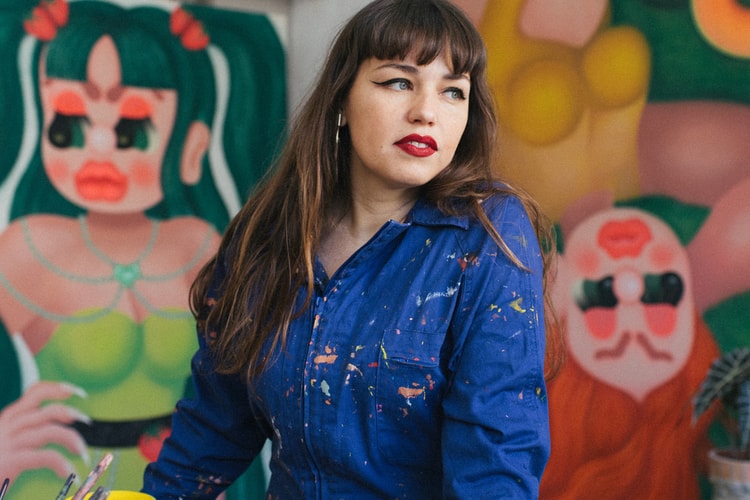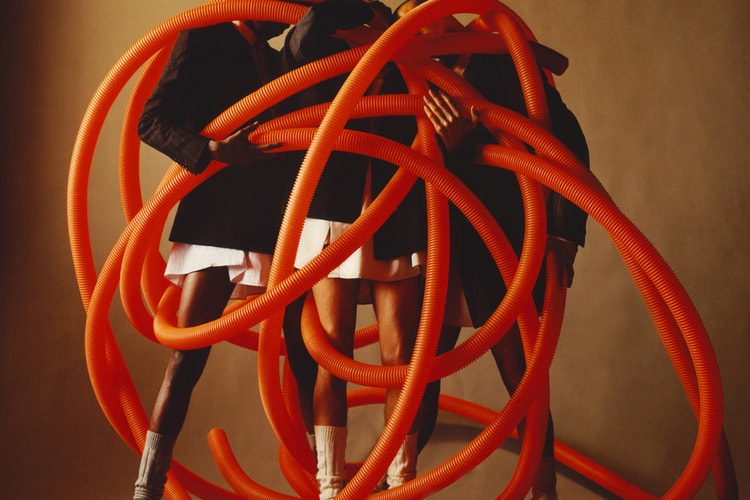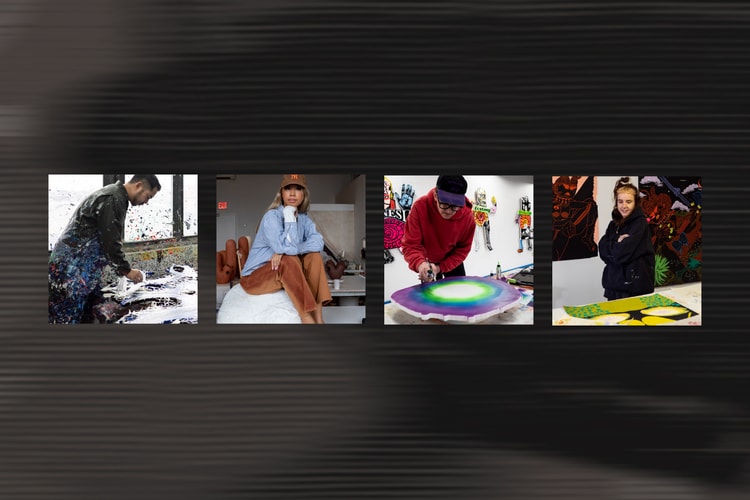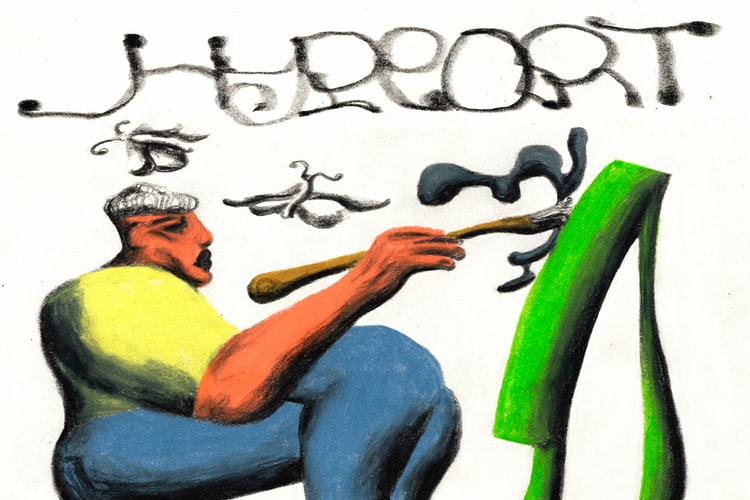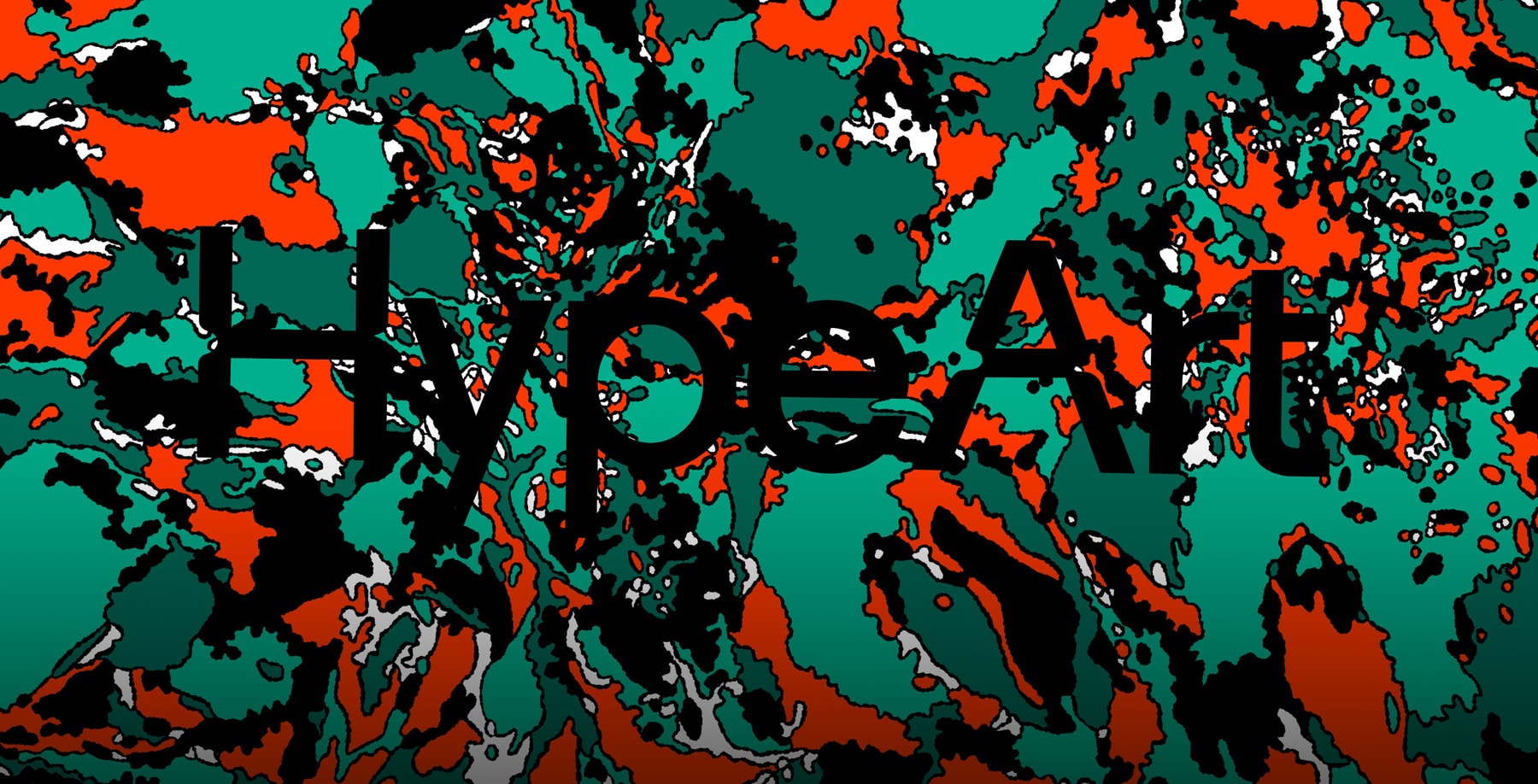

While normally distinguished from one another, art and geology live on the same plain for British artist, Ella Webb. Based in London, her artwork doubles up as ‘research’ that she meticulously lays in watercolor, gouache and paint markers in Moleskine notebooks, as well as across limited-edition prints and clothing capsules.
Webb’s abstract illustrations are aesthetically pleasing, just like the scientific films and attire that inspired her as a child. Of the many documentaries that resonated with her, The Volcano Watchers from 1987, which featured the late French volcanologists Maurice and Katia Krafft, had a big impact, which she continues to draw from today as she records her travels across the world.
In her own studies, Webb seeks to make visible the titanic forces that lie just under the surface. Sourced from both memory and old geographical textbooks, some of which contains theories that have since been disproven, Webb’s “art narrates a world which sits between the margin of fact and fiction,” she tells Hypeart.
In particular, Japan has shown to constantly play muse for the artist. Predominantly a mountainous country, filled with volcanoes and tectonic activity, Webb notes that “the entire culture possesses an acute awareness for nature.” Having recently returned from the Japanese island of Yakushima, which notably inspired Studio Ghibli’s 1997 film, Princess Mononoke, Hypeart caught up with Webb to discuss her practice, her affinity for Japan, as well as her thoughts on the climate emergency. Read the full Pen & Paper interview below.

While many kids aspire to be athletes or musicians, you wanted to be a volcanologist as a child. What sparked this interest?
Looking back at my childhood, I definitely felt a deep disconnect with children of a similar age. I could never really understand them and often had wildly different interests. My time was often spent alone at the top of my parent’s garden, studying insects, dissecting plants and genuinely bringing a lot of the outdoors inside. My grandmother helped me to create enclosures for a lot of these invertebrates, predominantly snails. I was, and still am, fascinated by these creatures and have often kept some form of insect inside of my studio.
I’m drawn to factual information and this was obvious during my childhood. I distinctively remember carrying around an encyclopaedia. I loved the imagery that coincided with the text and more specifically the diagrams. They allowed me to visualize a world that I felt was often hidden and helped to cement a further understanding of how the world worked and how it came to be. This naturally drew me to people who worked directly in the field, or characters who encompassed a sort of ideology that I myself would like to live by.
I didn’t understand why I functioned the way I did until I was later diagnosed with autism, and then everything made sense.
When did art come into the picture and can you recall the way in which your practice developed?
Every child has the ability to draw, it’s just whether you decide to pursue an artistic path and hone in on those skills. I guess I was one of those. I also definitely couldn’t live without drawing on a day-to-day basis. It fuels me in ways that other avenues do not.
I’ve always drawn elements of nature, but I became focused on geological elements after watching a few documentaries on Maurice and Katia Krafft and so these just consolidated my obsession. Shortly after, I discovered the likes of Marie Neurath and Orra White Hitchcock and realized that I could create work based on my interests and develop a style around that, rather than just finding a style to fit to the mould of what others wanted.
“My art narrates a world which sits between the margin of fact and fiction.”
Music and fashion also show to be big areas of creative expression. Can you talk on this more.
I guess I’m attempting to imitate some of my idols. I used to watch quite a number of documentaries and films with my father growing up and I became obsessed with a lot of the attire which the characters and scientists wore. There’s definitely something about their style which I’m drawn to. They’re clothing is just very aesthetically appealing. Perhaps it’s the combination of colors coincided with some pretty iconic graphics which just draws me to these figures alongside their lifestyle and/or profession.
Then when I discovered Maurice and Katia Kraft, Jacques Cousteau and then fictional characters such as Alan Grant, Ellie Sattler, Ellie Arroway and Jo Harding, it further fueled my creative expression. They were all just wrapped up in this world which I wanted to be part of, so I suppose I began to imitate them, which then helped me to form my own style.
Perhaps film is more of an interest or creative expression than music. I like music, but can often find it overwhelming, plus, I mostly listen to film scores rather than specific artists. Again, it’s immersing myself into this fictional world which doesn’t exist and I feel like I can relive the emotions of watching a specific scene from one of my favorite films.
Can you walk us through a normal day in your studio practice?
I always go for a walk for at least an hour as soon as a I wake up. Then I head to my studio which is about a half an hour drive away from where I live. It’s all dependent on whether I have a client project or I’m working on a personal project. If it’s a client project, then I pretty much work on that solely for the entire time. If there’s a small amount of time where I’m waiting for client feedback, then it allows me to do some larger scale paintings.
If it’s a personal project, then it involves research which includes lists of flora, fauna and or the process which I’m trying to illustrate. Then comes the small rough sketches to try and figure out the general composition so that I can execute the idea quickly. It can be quite difficult though, as I often get pretty fixated on new found obsessions and if that happens then I have to sort of ride it out and let it take over my time. I recently became incredibly interested in Mars and Olympus Mons which inevitably led me to research volcanoes of the Solar System and that pretty much ruled my life for a month or two.
How do you approach one of your many journal entries, from earliest idea to final execution?
I have a set of gridded sketchbooks which I like to use to sketch out small versions of particular diagrams, I also use these notebooks for research notes. These are mostly lists of plant species, animals and then geological terminology or facts about specific volcanoes. This information informs the next phase of sketches, which is just a process of accumulating a collection of diagrams or infographics about a specific place or topic. These are then finalized into large paintings or linear illustrations which are drawn by hand, scanned in and then filled with specific colors.
If you could, how would you describe your art and what is your motive behind the work?
My layered drawings examine landscapes and the natural world; reminiscent of geographical textbooks. I bring to my scientific work detailed visions of the earth’s features with graphic elements which derive not only from my personal experience, but from early and current scientific discoveries of how the earth came to be. A lot of these ‘early’ theories have been disproven and therefore it makes my work strangely abstract in form. Therefore, my art narrates a world which sits between the margin of fact and fiction.
Japan is a country that has played muse for you for quite some time now. Can you reflect on your early experiences, the natural beauty of the country and how you still find inspiration there?
Japan lies at the intersection of four major tectonic plates, as a result of which Japan has more measurable earthquakes than any other country and has over 100 active volcanoes. I have long been drawn to Japan, where the entire culture possesses an acute awareness for nature. In modern day society, nature can often be seen as something separate and expendable. Whilst in Japan, by constantly living under the presence of active volcanoes, earthquakes and tsunamis, I feel that it’s had a profound effect on the landscape and therefore the culture.
I tend to avoid the cities in Japan, I love the countryside there. I’ve just returned from Yakushima after spending a few days hiking there. I enjoyed the close-knit community immensely and relished being quite far away from the main island. The flora and general geography were especially fascinating. Next time I’m in Japan, I’d like to steer clear of the main islands and travel around some of the 260 inhabited archipelago islands over a course of a few years.
“You are as strong as you allow yourself to be.”
What is your favorite part of the country and do you see yourself living in Japan in the long run?
My favorite part is Kyushu, I absolutely love it there. Although Yakushima is a real contender, I just need to go and spend an extended period of time there! Perhaps a month would suffice. I’d love to buy a rundown house in Japan to renovate, and then use it as an artist retreat for periods of time during the year. Somewhere in the mountains, with some land where I can have a garden is a dream I’ve had for a while.
When reflecting on the Fukushima Disaster of 2011, you spoke of invisible forces that underly the natural world. Since then, and really long before, the climate emergency has been raising to the boiling point we are currently heading. As much of your work relates to geology and the natural world, can you share your thoughts on all this?
Perhaps we should bear in mind, that this world our species inherited took the biosphere 3.8 billion years to build. The intricacy of its species we only know in part, and the ecological balance they’ve created by working together is something we’ve only recently (in terms of earth’s history) begun to grasp. We’ve been on this planet for a tiny fraction of its history, and have undoubtedly wreaked havoc within a very small-time frame. We are wrecking the planet, especially the living part and the response to this particular crisis has undoubtedly been unacceptably weak. There is a disconnect and I have often wondered if that’s one of the root causes. Reciprocity and friendship with our environment, organisms and species is beneficial to both parties in more than one way and I believe we’ve lost a huge part of this.
A lot of people appear to be somewhat pessimistic about the future and it can be incredibly easy to find yourself trapped in that negative cycle. Personally, for me, I don’t think it’s necessarily beneficial to wake up feeling that the future is an approaching day of doom, it’s paralyzing. I’ve found that it makes it incredibly difficult to resolve issues when you yourself are overwhelmed with the scale of these issues and attempt to take on ‘everything’. We’re living in a society where we’re bombarded with an intense amount of information on a day-to-day basis. It’s impossible to emotionally and physically resolve all of these issues by yourself and to even be well informed on every issue, but I believe you can use your available time to dedicate it towards a few movements or issues where you’d like to create change. To quote Edward O. Wilson, “Study, understand, enjoy and protect.”
I also would like to just sort of mention that I believe that there needs to be a change in the language used to talk about the climate crisis and even our environment. I steer clear of the word ‘sustainable’ (it’s been overused by companies to essentially greenwash) and also words which sort of insinuate that nature is a separate entity to human beings. I mean, it’s not? You know, our planet has taken billions of years to create our environment which sustains us and without it, we would cease to exist.
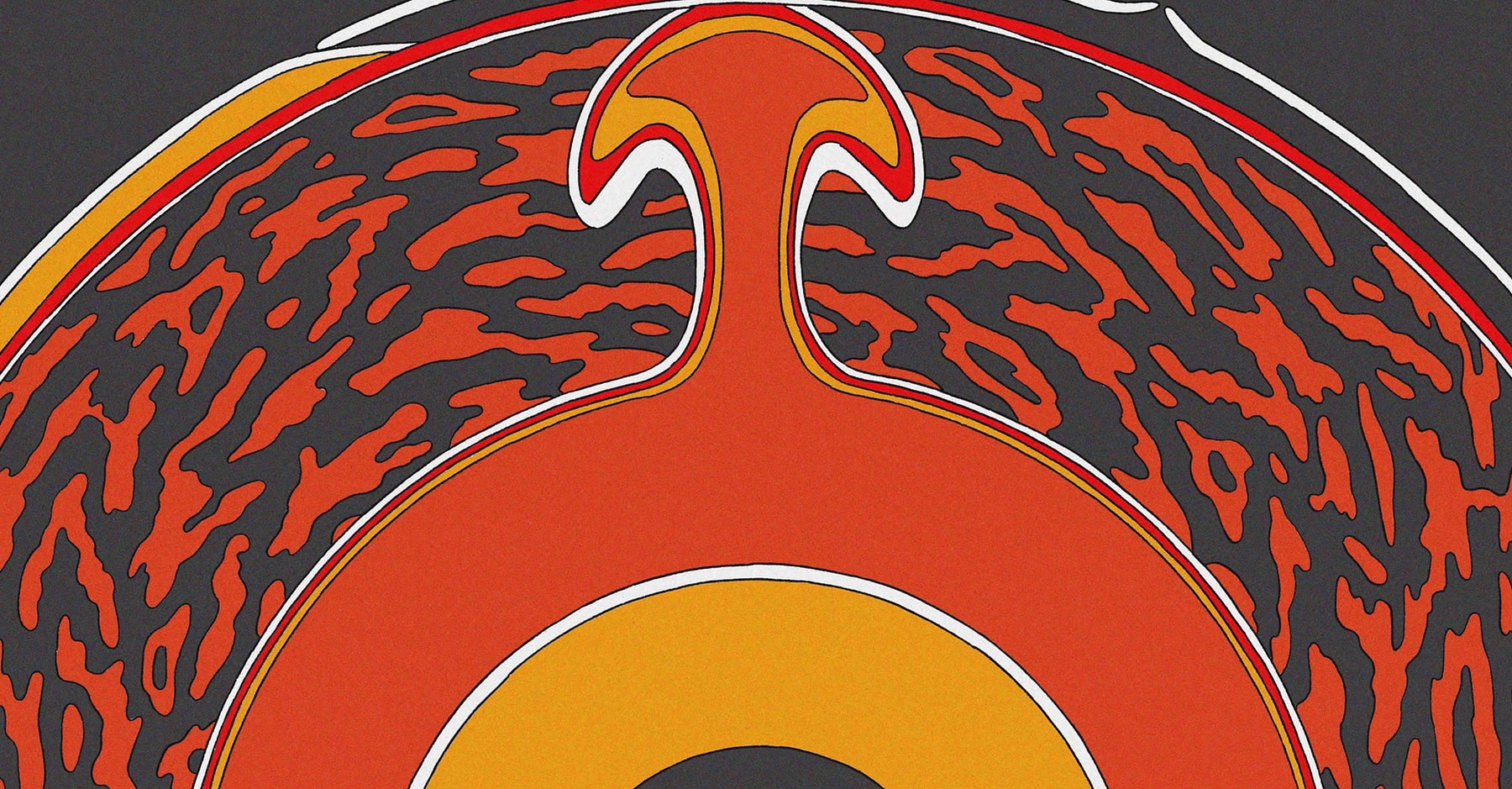
In times of crisis, humanity has repeatedly shown to produce incredible solutions to existential problems. Are you ultimately hopeful?
As long as we’re not complacent and we work with a high sense of urgency towards a ‘thriving’ future, then I believe that yes, there is hope. Each person has a role to play and the role you play does matter. You are as strong as you allow yourself to be.
Bringing the focus back down to your art, are there any future exhibitions or projects you’d like to talk about?
I’m aiming towards creating a lot more personal work. Whether it be illustrative prints, zines and also creating larger scale works to show in future exhibitions. I’d like to move towards creating large bodies of work to show in galleries. I’ve also been working with my sister Martha on developing a line of fleeces. I’d like to develop my own hiking and/or outdoor gear eventually as it combines multiple interests of mine. I have a few upcoming projects will be released perhaps in a year or so.
What would your dream project and/or collaborator be?
I’d love to work with Patagonia on a line of clothing, I’ve always dreamed of being a designer at the company. Creating informative leaflets and infographics for the National Parks Service is also another top project on the wish list. I also am pretty interested in space and would love to create merchandise, infographics, patches and various others things for companies such as NASA and Space X. Other collaborators who I’d like to work with would include National Geographic, New Scientist and also the Natural History Museum.
All artwork courtesy of Ella Webb. Portrait by Darcie Judson.



